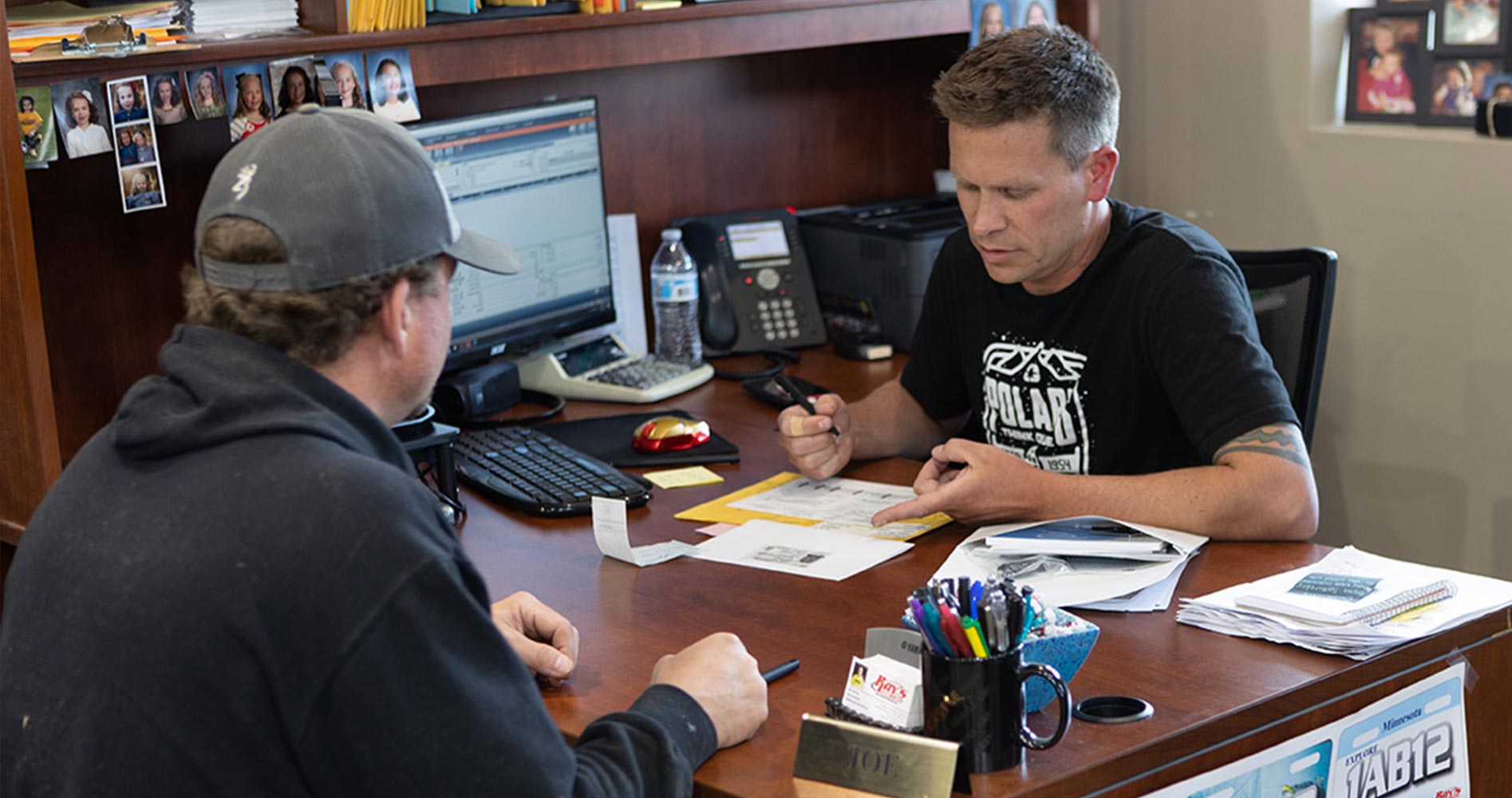Over the past decade, marine dealerships have undergone a significant digital transformation. What was once a retail segment reliant on boat shows, print ads, and word-of-mouth has increasingly embraced email campaigns, text messaging, and online engagement – trends accelerated by the COVID-19 pandemic. In the marine retail industry represented by the Marine Retailers Association of the Americas (MRAA), dealers are discovering that digital marketing is not a luxury but a necessity for sustaining growth. This report examines how digital tactics – especially email and text messaging – have affected dealership performance in the last 5–10 years, with data-driven insights, benchmarks, and real-world examples from marine and adjacent industries.
The Shift to Digital in Marine Retail (2015–2025)
Marine dealers have historically been slower to go digital than auto or RV dealerships, but the tide is turning. Industry veterans have “been touting digital marketing for years” , yet many dealerships only truly pivoted when forced by market changes. The COVID-19 pandemic in 2020 was a tipping point. Dealers suddenly faced showroom closures and canceled boat shows, while a surge of new boat buyers entered the market. This “digital pressure” pushed even traditional dealers to adopt online tools. For example, virtual boat shows sprang up to replace physical events, attracting over 10,000 visitors in one case (tradeonlytoday.com). Boating websites saw traffic and leads skyrocket; in spring 2020, online boat listings experienced a 55% jump in views and a 106% increase in leads year-over-year (tradeonlytoday.com).
In the words of one industry analyst,“the pandemic has rewired companies around data and digital services”. Critically, consumer behavior had already shifted before COVID. Today an estimated 86% of marine buyers shop digitally during their purchase journey (boatingindustry.com).
Rather than beginning at the dealership, most customers start online – researching models, reading reviews, and comparing prices. By the time they contact a dealer, they are often well-informed and farther along in the decision process. Adjacent sectors mirror this trend: car shoppers, for instance, now spend the majority of their journey online, even if 95% still complete the purchase in-store. Marine dealers must engage customers online or risk missing out on where buyers are making decisions.
COVID-19 accelerated digital adoption, but the change is here to stay. Dealers who honed their digital skills prior to 2020 were able to pivot quickly when lockdowns hit, while others scrambled. In a prior MRAA article, Liz Keener made a great point that “digital retailing is the future of selling boats” and it does not replace the showroom –it extends it. Even as in-person interactions remain vital for finalizing sales and fostering relationships, a robust digital marketing strategy has become fundamental for lead generation, customer retention, and overall competitiveness in marine retail.
Email Marketing – Driving Effectiveness
Email marketing has emerged as a cornerstone of dealership marketing, delivering consistent results when done right. Email is known for an exceptionally high return on investment (ROI) – studies show an average of about $42 return for every $1 spent, outperforming many other channels. This impressive ROI stems from email’s low cost and broad reach. Many consumers check their email daily, making it an ideal way to stay in front of customers and prospects with relevant content.
Yet, the effectiveness of email for marine dealers depends on strategy and execution. Typical open rates for marketing emails hover around 20% across all industries (campaignmonitor.com), but generic “blast” emails from dealerships often fare worse. In one analysis of automotive dealers (a closely related sector), campaigns averaged only 9–12% open rates with ~14% click-through (porchgroupmedia.com); a sign that many dealers were sending untargeted or overly salesy emails. Marine dealers historically made similar missteps by sending one-size-fits-all promotions. It’s no wonder that an industry expert admitted “around 75 percent [of marketing emails] go unread” in his inbox.
The lesson: quality and relevance of content are paramount for email success. To harness email effectively, marine dealerships are adopting content-rich, customer-focused approaches. Rather than blasting inventory listings, savvy dealers provide value in their newsletters – boating tips, how-to guides, maintenance reminders, local event news, etc.
As marketing columnist Norm Schultz notes, “Instead of pitching products or services, deliver information that makes the recipient more intelligent and successful at using the boat” – tradeonlytoday.com.
This kind of content marketing builds trust and keeps boaters engaged with the dealership. Over time, useful and relevant emails cement an enduring customer relationship that drives repeat business.
Text Messaging, the Real Time Communicator
While email is excellent for rich content and broad outreach, text messaging (SMS) has become the go-to channel for real-time, fast communication. Studies show 89% of consumers prefer to interact via text over phone calls, and a staggering 98% of text messages are opened – with 95% read within just 3 minutes. These statistics are game-changing for marine dealerships, where timely responses and quick exchanges can make or break a sale or service experience. In an industry known for phone tag and voicemails (especially during busy boating season), texting offers a direct line to customers that cuts through the noise.
Dealerships also leverage their DMS or CRM for automated texting for marketing campaigns. SMS can effectively deliver maintenance reminders, event invites, and seasonal promotions directly to customers’ pockets. For example, a dealer might auto-send a “Happy 1-Year Boat Anniversary! Time for an annual service check-up” text to customers who bought a year ago, possibly accompanied by a small discount offer. These “small, thoughtful messages” keep the dealership top-of-mind and encourage repeat business. Birthday greetings or holiday boating tips via text add a personal touch that strengthens customer loyalty. Importantly, because text messages feel personal and urgent, they tend to get immediate attention – making them ideal for limited-time offers (“Come by this weekend for a demo ride event”) or critical alerts (like weather-related service center closures, etc.).
The engagement and conversion metrics for SMS are notable as well. As noted, open rates approach 98%, far exceeding email. Click-through rates (CTR) on text messages average about 6%, which is more than double the average email CTR (~2.5%) (info.joinsubtext.com). This is partly because texts are succinct, and often contain a single call-to-action link. Conversion rates follow suit: SMS carries an average conversion rate of 29%, versus around 15% for email.
Some analyses even indicate SMS marketing can generate “17× more revenue than email” in certain campaigns. Marine dealers have seen this in practice when texting is used to re-engage dormant leads – for instance, a quick text about a price drop on a boat model to a previously interested shopper can rekindle the conversation more effectively than an email lost in the inbox.
Integrating a Solution
To maximize the impact of email and SMS, successful dealerships are turning to CRM & Marketing solutions. Further, ensuring you’re targeting a DMS that has direct CRM & Marketing functionality is crucial since the DMS serves as the central hub for customer data – including leads from the website, purchase history, service records, and communication preferences. When these systems are leveraged, they enable powerful tactics that specifically benefit marine dealers:
- Automated Lead Nurturing: Marine purchases often have long sales cycles (4+ months on average), so keeping in contact is crucial. A CRM can trigger a series of emails or texts to new leads over weeks and months – for example, sending product information, financing options, and testimonials.
- Personalized Offers via Segmentation: By utilizing embedded CRM & Marketing features within your DMS, your dealership can slice their customer base into meaningful segments. For context, Lightspeed DMS’ Marketing & CRM functionality allows for a dealership to use <Merge Tags> to filter for all owners of 3-year-old boats and send them a targeted upgrade offer (perhaps highlighting the newest model of their boat’s brand). Or, identify customers who haven’t serviced their boat in 12 months and send a maintenance reminder text. This data-driven targeting yields higher response rates than blanket promotions because the content speaks to a specific need or timing. It also mitigates the risk of alienating customers with irrelevant messages
- Timely Communication & Task Management: Modern CRM systems used by marine dealers often support automation. When a customer sends an inquiry or a message on social media, the CRM can log it and even initiate an automated acknowledgement email. It can also assign follow-up tasks to sales reps, ensuring that no lead falls through the cracks. Given that 90% of car dealers admitted to using manual, ad-hoc processes for follow-ups in the past, the shift to a structured CRM approach in marine retail will be what defines your competitive advantage.
Addressing the Common Objections
You might worry that digital marketing is too time-consuming, expensive, or impersonal for your customers. In reality, starting with simple tactics like sending a monthly newsletter or scheduling automated text reminders can help deliver quick wins and save time on repetitive tasks like phone calls. Even less tech-savvy customers benefit from occasional digital touchpoints; they often appreciate timely updates without having to call or stop by.
Email and SMS can be surprisingly affordable and generate high returns. Viewed within the lens of “will this feature get me a new deal each month”, the margins speak for themselves. Ultimately, automation and personalization can coexist: a well-timed, personalized message strengthens customer relationships instead of replacing them.
Social media plays a critical role in expanding a dealership’s reach, building community, and driving top-of-funnel awareness. Platforms like Facebook, Instagram, YouTube, and increasingly TikTok are no longer just “nice-to-haves” – they are essential tools for modern marine retailers.
In fact, 74% of consumers rely on social media to guide their purchasing decisions, and that includes high-ticket items like boats (sproutsocial.com). From walkaround videos to customer delivery photos, marine dealerships are discovering that social platforms offer unique ways to showcase lifestyle, expertise, and inventory – all while humanizing the brand.
Leading dealerships are integrating their social media efforts with their Customer Relationship Management (CRM) systems. When someone comments on a boat listing, sends a message via Facebook, or fills out a lead form from an Instagram ad, the best platforms automatically log that engagement in the CRM. Sales teams can then follow up via text, email, or call – all while tracking outcomes and customer history in one place.
In Conclusion, no matter your initial reservations, digital marketing provides practical, high-impact solutions that enhance, rather than replace, your traditional methods. By blending personal interactions with automated tools, you can keep modern buyers engaged, build loyalty, and drive consistent growth in your dealership.
Full story also available via MRAA Spotlight.

